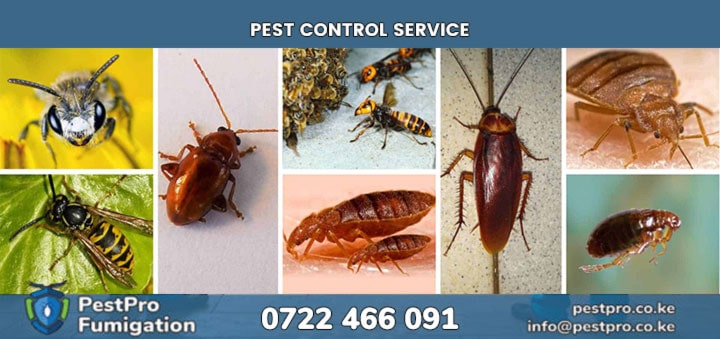Pests in Mombasa Region pose significant challenges to agriculture, households, and public health due to the area’s tropical climate, which fosters a diverse range of pest species. The warm, humid conditions create an ideal environment for insects, rodents, and other pests to thrive, impacting crops, stored goods, and residential spaces. This article provides a detailed overview of the most common pests in Mombasa Region, their characteristics, and their effects, presented in a tabulated format for clarity.
Common Pests in Mombasa Region: An Overview
The prevalence of pests in Mombasa Region is largely driven by its coastal climate, characterized by high temperatures and humidity. These conditions support the proliferation of various species, from insects like termites and mosquitoes to rodents such as rats. Effective pest management requires understanding these pests’ behaviors and habitats to mitigate their impact on agriculture, health, and property.
| Pest Name | Description | Impact | Control Measures |
|---|---|---|---|
| Termites | Small, pale insects that live in colonies and feed on wood and plant material. | Cause structural damage to buildings and destroy crops like maize. | Use of termiticides, bait systems, and regular inspections. |
| Mosquitoes | Small, winged insects, with species like Anopheles and Aedes prevalent. | Transmit diseases such as malaria and dengue fever. | Insecticide-treated nets, repellents, and eliminating standing water. |
| Cockroaches | Resilient insects with flat, oval bodies, often found in kitchens and sewers. | Contaminate food and spread pathogens like Salmonella. | Proper sanitation, sealing entry points, and insecticide use. |
| Rats | Rodents with long tails, often found in urban and rural areas. | Damage crops, contaminate food, and spread diseases like leptospirosis. | Traps, rodenticides, and securing food storage. |
| Fall Armyworm | Moth larvae that attack crops, particularly maize and sorghum. | Cause significant crop losses, threatening food security. | Crop rotation, biological controls, and targeted pesticides. |
| Mealybugs | White, cotton-like insects found on plant stems and leaves. | Reduce plant vigor and promote sooty mold growth. | Neem oil, insecticidal soap, and encouraging natural predators. |
| Red Spider Mites | Tiny arachnids that feed on plant sap, causing stippling on leaves. | Damage crops like tomatoes and citrus, reducing yields. | Miticides and maintaining plant health through irrigation. |
| Fruit Flies | Small flies that lay eggs in ripening fruit, such as mangoes. | Cause fruit spoilage and economic losses in orchards. | Fruit bagging, traps, and timely harvesting. |
Quote: “Effective pest control in tropical regions like Mombasa requires an integrated approach, combining cultural practices, biological controls, and minimal pesticide use to protect crops and health.” – University of Hawaii Extension Service
Impact of Pests in Mombasa Region on Agriculture
Pests in Mombasa Region significantly affect agricultural productivity, particularly for staple crops like maize, cassava, and fruits such as mangoes and citrus. The fall armyworm, for instance, has been a major threat since its introduction to Africa, causing up to 50% yield losses in maize fields. Similarly, fruit flies devastate orchards by rendering fruit unmarketable. Farmers in the region face ongoing challenges in balancing pest control with sustainable practices to maintain soil and crop health.
Household and Public Health Concerns
In residential areas, pests in Mombasa Region like mosquitoes and cockroaches pose serious health risks. Mosquitoes are vectors for malaria, a leading cause of morbidity in the region, while cockroaches contaminate food and surfaces, contributing to diseases like dysentery. Rats, prevalent in both urban and rural settings, exacerbate these issues by gnawing through infrastructure and spreading pathogens. Integrated pest management (IPM) strategies, such as proper sanitation and biological controls, are critical for mitigating these risks.
Quote: “Integrated Pest Management (IPM) coordinates pest biology and environmental information to prevent unacceptable damage levels, prioritizing ecological balance.” – Cornell University
Environmental Factors Driving Pest Proliferation
The tropical climate of the Mombasa Region, with its consistent warmth and high humidity, creates a breeding ground for pests. Seasonal rains exacerbate the issue by providing standing water for mosquito breeding and moist conditions for termites and fungi that support pest growth. Urbanization also contributes, as improper waste management attracts rats and cockroaches. Understanding these environmental drivers is essential for developing targeted pest control strategies.
Strategies for Managing Pests in Mombasa Region
Effective management of pests in Mombasa Region requires a multi-faceted approach. Integrated Pest Management (IPM) is widely recommended, combining cultural, biological, and chemical methods. For example, crop rotation and intercropping can deter fall armyworms, while introducing natural predators like ladybugs can control mealybugs. In households, sealing entry points and maintaining hygiene reduce cockroach and rat infestations. Community education on pest identification and prevention is also vital for long-term control.
Quote: “A healthy, growing plant is the best defense against most insect pests, as stressed plants are more susceptible to infestations.” – University of Missouri Extension
Future Outlook for Pest Control
Advancements in pest control technologies, such as pheromone traps and biopesticides, offer promising solutions for managing pests in Mombasa Region. Research institutions and agricultural extensions are working to provide farmers with resistant crop varieties and eco-friendly control methods. Community-driven initiatives, including awareness campaigns, can further empower residents to tackle pest challenges effectively. By adopting sustainable practices, the region can reduce the economic and health burdens caused by pests.
More pest Control ServicesPestPro Facebook Page
Medium
